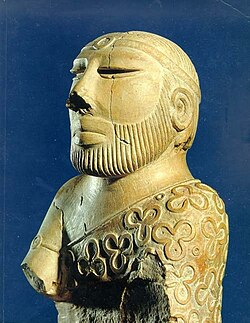Samma dynasty
| History of Pakistan |
|---|
| Timeline |
|
|
|
|
Early modern
|
|
Modern
|
|
History of provinces
|
The Samma dynasty (Sindhi: سمن جو راڄ) ruled the region of Sindh, Kutch, parts of Punjab and Balochistan from c. 1351 to c. 1524, with their capital at Thatta in modern Pakistan; before being replaced by the Arghun dynasty.
The Samma dynasty has left its mark in Sindh with magnificent structures including the necropolis of and royalties in Thatta.[1][2]
Samma Dynasty Media
Tomb of Bibi Jawindi, built during the 15th century at Uch Sharif
Tomb Jam Mubarak Khan, a Samma Prince, at the Makli Necropolis
Jam Nizamuddin II's tomb features a jharoka that displays Gujarati influences.
Makli Necropolis features several clusters of elaborate funerary monuments dating between the 14th and 18th centuries. The site rose to prominence as a major funerary site during under the rule of the Samma dynasty, who had made their capital near Thatta.
References
- ↑ The Hindu - The world's largest necropolis
- ↑ Pakistan, Census Organization; Latif, Abdul (1976). Population Census of Pakistan, 1972: Larkana. Manager of Publications.




